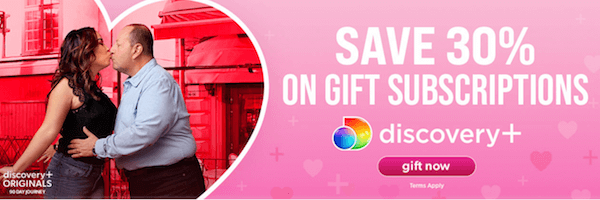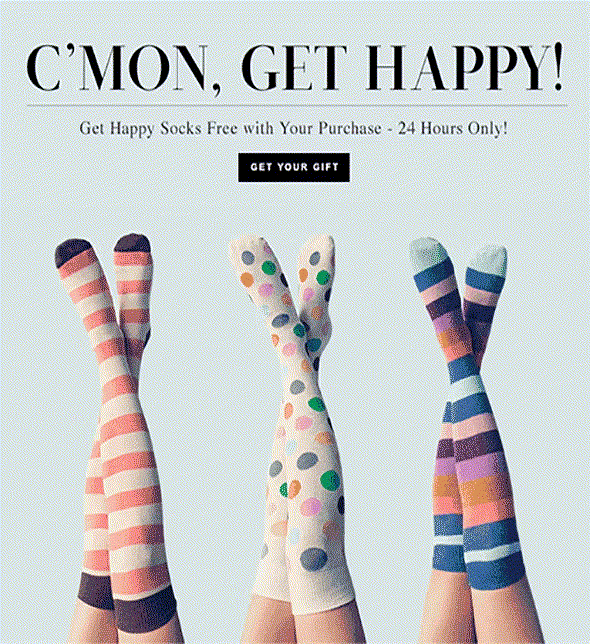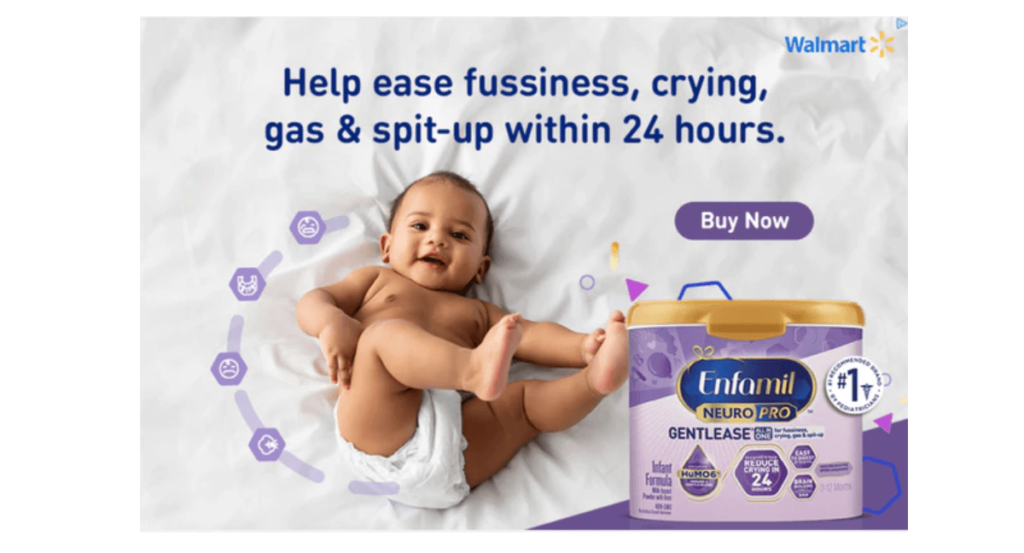The Power Of Banner Ads
If you want to increase the awareness of your brand or even attract new users, placing ads is one of the best ways to achieve this faster.
For one, the Google Display Network offers more than 1 trillion impressions, reaching over 90% of online users. So you can be sure that you’ll reach your target audience with a display ad or a clickable banner.
In this article, we’ll take a look at what a clickable banner ad is, how you can create it, and what real-world examples can use as inspiration.
Ads and business names!
Your name can help you increase conversions if you have a name that stands out. Try our business name generator to make sure you have a name people remember. The generator is free to use. Try it out.
What Is A Clickable Banner Ad?
A clickable banner ad is a type of paid display advertising that places a graphic in specific areas of a web page.
When you click or tap on this ad, you’re usually taken to a landing page that prompts you to take a specific action. Since it’s a paid form of advertising, it’s mainly used to draw attention to a product or service.
One of the Google Ads you can run for your business is a banner. However, 86% of users suffer from banner blindness. That means if you want to create a clickable banner ad, you need to stand out.
How To Create Effective Banner Ads
Since you need to be very creative in the design and placement of your banner ads, here’s a guide that will help you increase your click-throughs.
1. Use The Right Sizes And Dimensions
While there are many sizes to choose from when creating your banner ad, there are certain sizes that not only look good on the screen but convert better as well.
With a banner ad, you’re automatically interrupting the user’s experience. So, you need to place it just so that it attracts attention but doesn’t interrupt the browsing experience – both on mobile and desktop.
For this reason, Google Adsense has created a table that lists the most successful banner ad types. In this report are the four most effective dimensions;
- 728 x 90 pixels, also known as the leaderboard size
- 300 x 600 pixels, known as the half-page size
- 300 x 250 pixels, the medium rectangle format
- 336 x 280 pixels, the large rectangle format
As you can see in this example from Dell, the company has experimented with other dimensions, but two sizes have prevailed in its portfolio – the medium rectangle and the leaderboard.
Pro Tips
– Focus on the mobile experience first, determine mobile banner sizes, and experiment with them.
– Don’t place the banner in the navigation areas, so you don’t get unwanted clicks.
2. Use Color Theory Principles
After the size, the colors are the most important part of your display ads because since your target audience sees a lot of banners, you should show something attractive. Besides, they are the first thing that everyone notices. With the right color combinations, your ad will stand out without looking spammy.
But how do you know which colors are the right ones? Your brand palette is a good place to start. However, you need to mix your brand colors so that they evoke the exact emotions you want to achieve.
For example, red is a color of passion and love. However, it can also represent danger or anger. That’s why in this banner ad below, a color mix of pink and red was used. Since pink is associated with sweetness, it’s the perfect mix for a Valentine’s Day campaign.
If you’re unsure about which colors to use for your banner ads, we recommend that you study and apply color theory. This way, you’ll know whether you should choose a complementary or an analogous color scheme.
Pro Tips
– Each color has a different meaning in different cultures and regions – so explore whether your color evokes the right emotion.
– Don’t completely deviate from your brand colors to avoid becoming unrecognizable.
3. Add Animations To Bring The Banner To Life
Instead of using regular static images for your banners, you can use animations to draw more attention to your ads. You can either animate the entire ad or just the subject in the banner, as in our example below from smiley Sock.
As with other elements of your ad, make sure they aren’t too distracting. So use simple animations and not something that looks like the 4th of July. It should also be something that conveys the value of your ad.
In our example, the animation represents happy feet. But in reality, the feet only move from left to right.
So if you use a fully animated banner, make sure it doesn’t take more than 15 seconds. Don’t forget your CTA – remember that this is a clickable ad. So add a clear CTA in the last frame.
Pro Tips
– Don’t have your animation repeat more than three times, so it doesn’t become too repetitive.
– Make sure it stands out from the background image, so it’s immediately visible.
4. Use Powerful Images When Necessary
You don’t always have to use an image for your banner ad. However, if you want to convey what your product or service is, then it’s important to choose a meaningful image that conveys your message.
For example, to announce the launch of a new Starwars franchise, the following image was used for a banner ad. Not only is it eye-catching, but it also builds anticipation for the movie itself. That way, you’ll be curious enough to find out more.
So when using images, make sure you always choose something that’s directly related to your product. You can use stock photos or hire a designer to create an illustration specifically for your campaign.
Pro Tips
Always buy a licensed stock photo, so you don’t use a very common and unoriginal image.
Use high-quality images, as the quality can decrease when embedded in a banner.
5. Make Sure Your Text Is Readable
Once you’ve completed your design, it’s time to focus on your text. First, make sure your design doesn’t consume your text. Your text should be clear and easy to read. Everyone should be able to read your text at a glance.
In our example from IBM below, there’s an animation that draws your attention to the ad, but the text is still distinguishable. You can also read it right away because it stands out just like the other elements on this page.
Since the text area in an ad banner is limited, you must be able to convey your value in a few words. You can’t use more than four lines for your ad. So stick to one to two lines. Remember, the shorter, the better.
Pro Tips
– Keep your CTA between 1-3 short words.
– Use different contrasting colors to distinguish your text from your CTA.
6. Show Your Value Proposition
Since you don’t have much room in a banner ad to explain your value proposition, it’s best to show it. Ridge does this very well by showing you what sets them apart.
With one picture, they show you how they reduce the size of a wallet you have to carry around. You can see firsthand how easy it is to slim down your wallet and not carry a brick in your pocket.
So to make your value proposition clear, you need to supplement your text with an image that completes the story you’re trying to sell. You’re doing something better? Show it.
Pro Tips
– Find a specific customer pain you want to address – you can’t cover everything in one banner.
– Try to connect your solution to that specific problem.
7. Use Words That Highlight Your Benefits
In some cases, your pictures may convey part of your story, but you need your words to paint a more detailed picture. A picture of a happy baby can sell a diaper. In fact, it’s so effective that every diaper brand now has a similar image. So what can you use to stand out?
In our example below, this brand goes beyond the happy baby image. It shows you a much simpler life as a parent can be in just a few words. By highlighting what an irritable baby can look like, it paints a more effective picture.
Parents certainly don’t want to put up with a crying baby that spits up. In less than 10 words, you’ll probably click on this ad. That’s why you should use words to your advantage. Work on your ad copy for banner ads, so they convert better.
Pro Tips
– Be very brief in your banner copy – keep it short.
– Appeal to emotions by using specific words that evoke them – whether positive or negative.
8. Link To A Landing Page
Many business owners make the mistake of simply linking their clickable banners to their company’s homepage. While this isn’t necessarily bad, it can have a negative impact on your conversion rates in the long run.
Imagine you’re a user. If you saw an ad asking you to buy a particular item you were interested in, you’d want to click on it. How would you react if you clicked on the ad and landed on the home page of a shopping website? You’d probably feel lost at first. If you have to find the item, you will probably leave the site after a few minutes.
So when you create an appropriate landing page, make sure that the user experience is continuous. Are you asking them to sign up? Take them directly to a signup form.
If you’re asking them to buy a specific item right away, create a landing page for that item. The next action would then be to simply add the product to their cart. Remember, the fewer steps it takes, the less likely they’re to abandon the purchase.
Pro Tips
– Include trust signals such as trust badges, payment gateways, reviews or testimonials.
– Make sure your landing page is skimmable and includes all the information your leads might need to convert.
9. Test Different Copy And Sizes
Ultimately, tactics and statistics can only help you reach a certain level. To actually increase your company’s click-through rates, you need to know what exactly is working for your brand. That’s why we recommend testing different combinations.
Test different texts. Witty, funny, serious, all types. Do one-liners work better than three sentences for your brand? You can only find out if you try all options.
This isn’t limited to copywriting. You should also test designs, banner sizes, images, animations, and more. Run these tests over a period of time and note which combination works best. Over time, you can use this as a guideline for your business and for all future banner ads you’ll run.
Pro Tips
– Clearly define what the criteria for the winning variant should be.
– Run your tests for at least a week to get enough unbiased data.
10. Stay Consistent With Your Brand
In an effort to stifle the competition, you can lose sight of your branding. This can mean forgetting to add a logo, using different colors, or even deviating from your original brand voice.
However, your brand is what sets you apart from your competitors. You should be easily recognizable, relatable, and appealing. So try to convey this in your banner ads. You can incorporate your brand values into your campaign, as in our example from Brita below.
As you can see, they communicate their stance on environmental activism by pointing out that you’re reducing waste by choosing their product. Their brand colors are also intact, and the color mix is complementary.
So when you create your banner ads, always think about your brand. And it should be more than just the name of your business. Use your advertising to convey your mission, your values, and more.
Pro Tips
– Try to stick to your brand tone of voice, so you don’t attract the wrong audience.
– Incorporate your company’s name or logo into your design.
Conclusion
Clickable banner ads are a great way to get your product in front of thousands of people and attract quality leads.
However, since many people ignore these ads, you need to stand out from the crowd by choosing the right size, writing the perfect text, complementing it with the right creative, and sticking to your existing brand guidelines.








